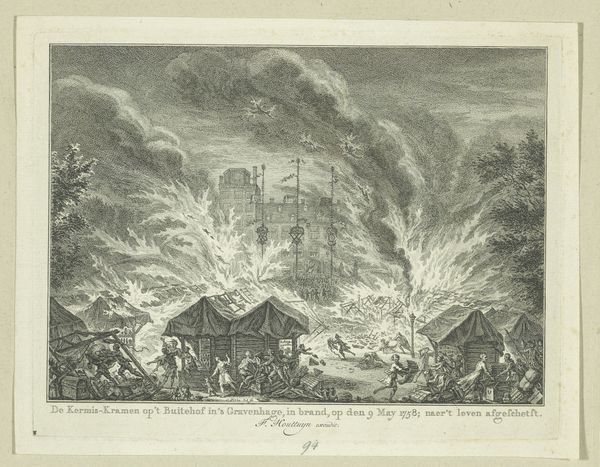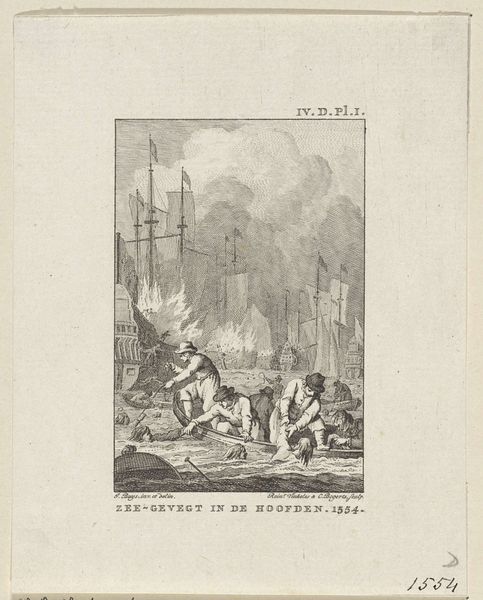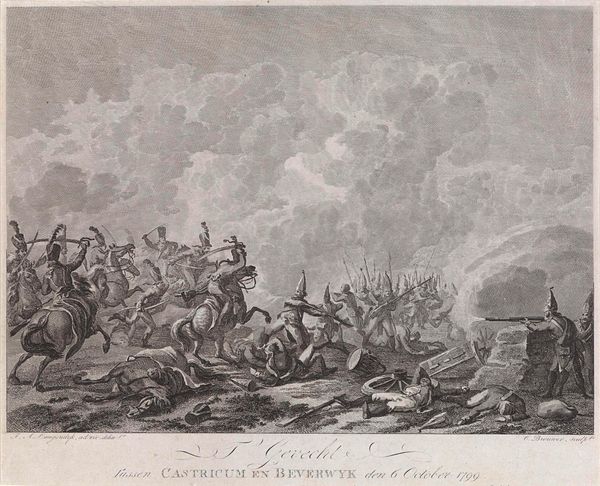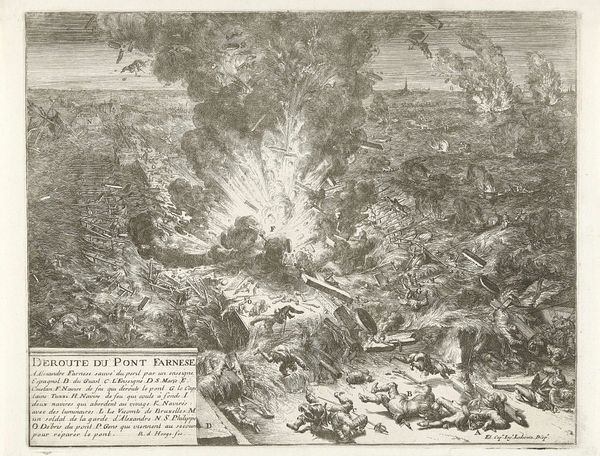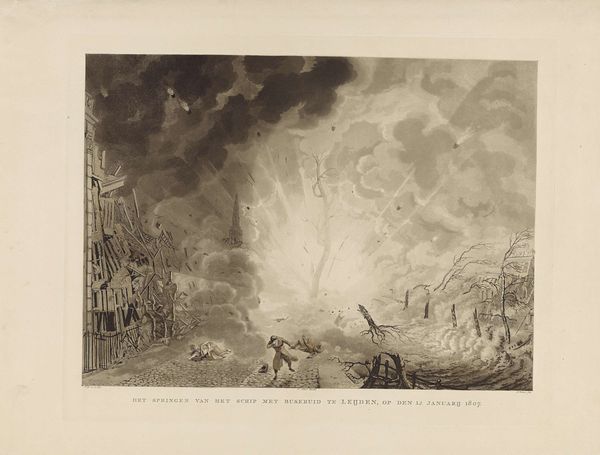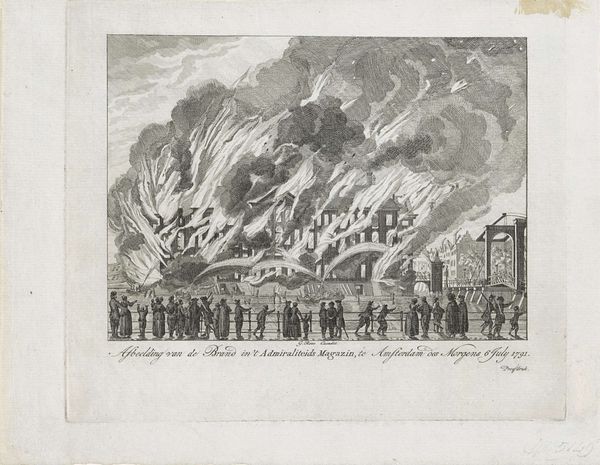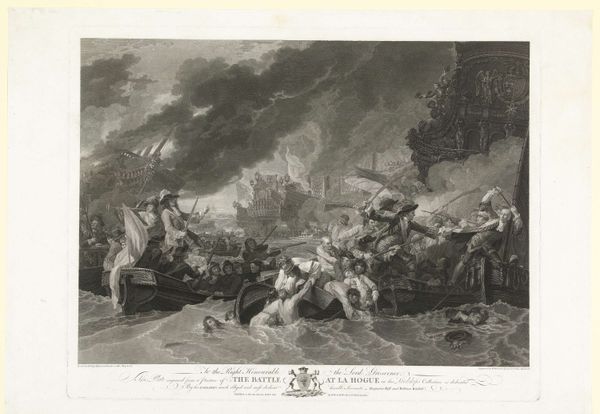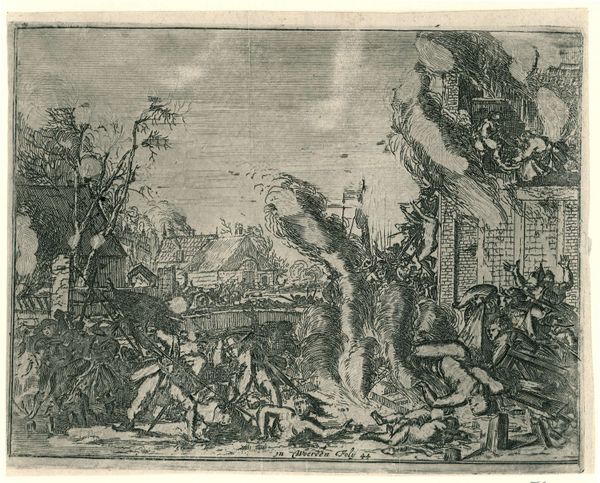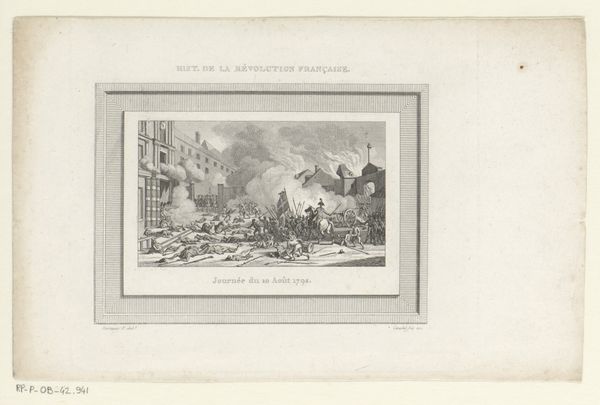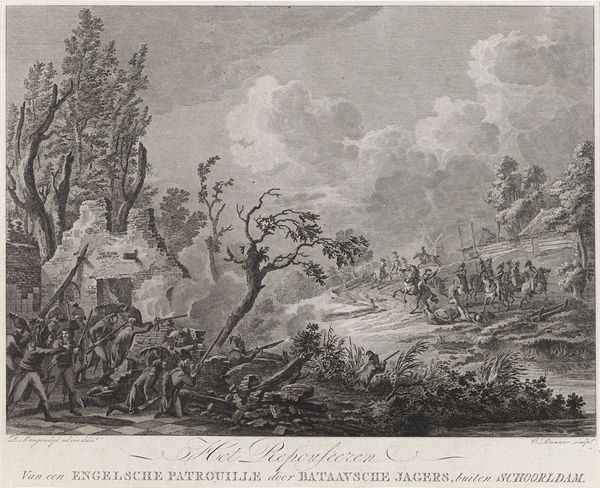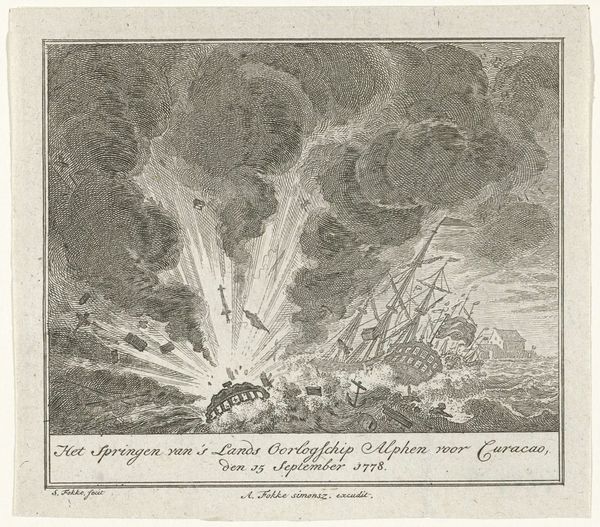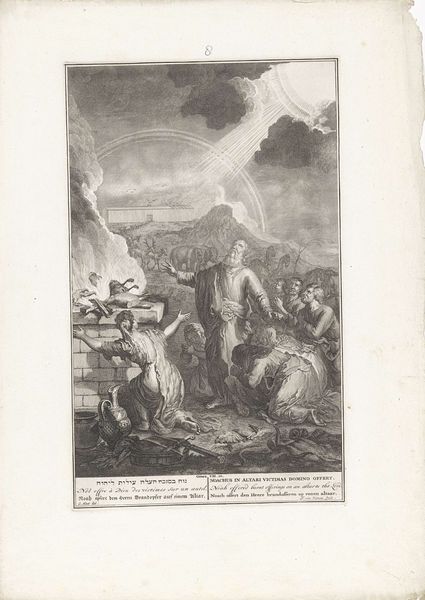
drawing, print, engraving
#
drawing
#
narrative-art
#
baroque
# print
#
landscape
#
cityscape
#
history-painting
#
engraving
Dimensions: Sheet (trimmed): 4 5/8 × 5 3/8 in. (11.7 × 13.7 cm)
Copyright: Public Domain
Curator: This dramatic scene is captured in "Incendie," an engraving by Quentin Pierre Chedel, created sometime between 1715 and 1763. Editor: My first impression is just pure chaos. It's overwhelming. So many figures in desperate flight, with that towering inferno in the background. Curator: Exactly. Chedel really masterfully conveys the terror and the complete societal breakdown that fire brings. Think about how urban fires shaped city planning, insurance, even social class divisions. It reflects the precariousness of life in a pre-modern urban environment. The printing press was important at that time for popular imagery and broad distribution. It shows a devastated cityscape to his contemporary viewers, an easily replicated and quickly recognizable statement. Editor: The helplessness is what gets me. These people are literally jumping into water that's already filled with bodies. There's a real sense of the complete collapse of order, of collective care. Gender and class vanish here. Are they wealthy merchants? Working-class families? Are they indigenous or people of color being displaced? The fire seems to erase any semblance of hierarchy. And what about the bridge itself? Is it a path to safety or another trap? Curator: You bring up an excellent point about the ambiguity of the bridge. That is a striking aspect that encapsulates a space for hope and despair. Its collapse implies broader structures faltering within the social sphere too. Editor: This image really invites questions about resilience, too. How do societies rebuild after such devastating events? Are there systems in place to ensure equitable recovery? Whose voices are centered in these narratives of disaster? "Incendie" may be set in the past, but it resonates powerfully with contemporary conversations around climate change, displacement, and community responsibility. How are women disproportionately affected? Who is most exposed in contemporary catastrophes? This artwork opens those important considerations. Curator: Yes, it is a timeless depiction, tragically applicable across history. It is a significant marker of history. By showcasing such societal crises, they have enabled discourse surrounding societal responsibilities in safety and resilience practices. Editor: Well, it’s certainly a powerful reminder that progress isn't linear and that we constantly need to re-evaluate the systems that are meant to protect us. Curator: A haunting work that still has lessons for our world today, indeed.
Comments
No comments
Be the first to comment and join the conversation on the ultimate creative platform.
